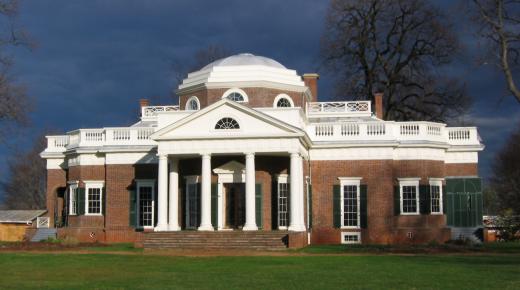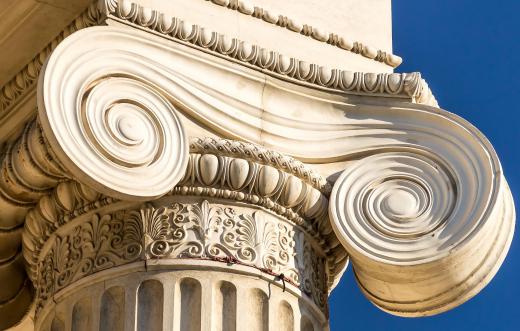On a columned building, the section between the top of the columns and the roof is called the entablature. The three parts, cornice, frieze, and architrave, were designed to complement different types of columns. The cornice, which extends out to the roof, and the architrave, which is even with the frieze, are split into several sections and feature solid designs. The frieze is usually the fanciest part of the entablature, and it sometimes displays carvings that tell stories. The Elgin Marbles in the British Museum are probably the best known example of the frieze section.
Entablature is the part of a building near the roof, inside or outside, that rests on top of the columns. Classical entablature consists of three sections: the cornice, the frieze, and the architrave. The design of each section would vary slightly with the style of column supporting the entablature. The width was also based on the height of the columns.

The highest part of the entablature is the cornice. It is ornamental molding, frequently having two to three different geometric or floral designs. The cornice also extends farther out than the other two parts because it has to meet and support the roof.
At the bottom of the entablature, the architrave is the main beam that rests on top of the columns and extends to be about even with the frieze. This section is also sometimes split into several parts like the cornice, but it is often the plainest part. The architrave is closest to the support beams seen in ceilings.

The middle section of the entablature is the frieze. Although it was occasionally omitted, most of the time the frieze was the elaborate, decorative part of the entablature. The most elaborate friezes would not repeat an image around the whole building but instead sometimes showcased a whole story.
Perhaps the best known example of entablature may be from the Parthenon in Athens, Greece. In the early 1800s, a number of sculptures and a large section of the building’s interior frieze were removed and taken to the British Museum. Called the Elgin Marbles, nearly 250 feet (75 m) of the frieze are now preserved in London. Owing to the damage to the Parthenon from war and pollution over the years, the Elgin Marbles may be the best record of the original building.
